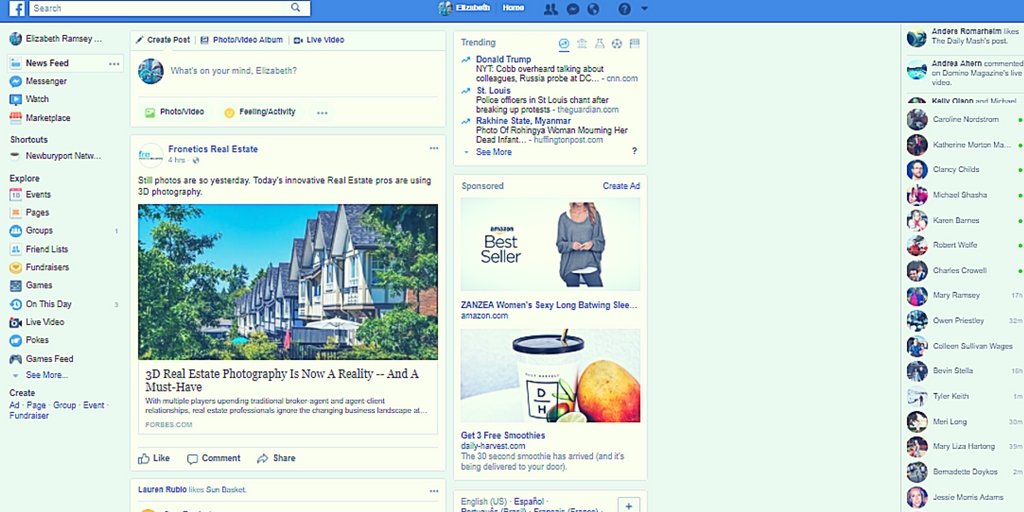When it comes to social media platforms like Facebook and LinkedIn, post once a day to improve engagement and visibility.
There has been endless research about the sweet spot for posting frequency to social media sites. The results all point to the same conclusion: there is no one-size-fits-all answer. You have to distribute content consistently over time, at the right time and in the right place for your business.
That being said, we at Fronetics do have some informed, data-based opinions about posting frequency for certain social media platforms. For example, we’ve written extensively about our Twitter experiment, in which we found that tweeting 40 times per day works best for us and most of our clients.
But for other platforms, we find that more doesn’t equal better. In fact, it can often equal worse. Let me explain why.
Why you should be posting less on Facebook and LinkedIn
We strongly believe that most B2B companies should post no more than one time per day on Facebook and LinkedIn. We also suggest that businesses only post during the workweek on LinkedIn. That is because of the way people use these networks — and because of how the platforms’ algorithms value content.
Firstly, though we’d like for prospects to be thinking of our brands constantly, they don’t. And they don’t want to. Think of that one family member that inundates your newsfeeds with posts. Though you might have liked to see a photo from that person now and again, the inappropriate posting frequency causes you to think negatively about each post you see.
And you are a business, not a family member. When you post too frequently, your business loses credibility, and followers view your posts as spam. Even on LinkedIn, which is a network for professional content, over-posting leads to disengagement.
Remember that the lifespan of a Facebook post is about 5 hours, and with LinkedIn, it’s even longer. (One of the first posts on my feed right now is from 5 days ago.) So you don’t need to provide a constant stream of content to get your audience’s attention. Your focus should be distributing the most relevant, interesting content you can. Which is related to the second reason we recommend posting only once a day on these networks: algorithms.
Facebook estimates that each user’s newsfeed must filter 1,500 possible stories from friends and pages every day. Ain’t nobody got time for that! So Facebook, like LinkedIn and other networks, uses an algorithm to determine the content you’d like to see most, based on feedback you provide. That feedback comes from actions you take: hiding posts, liking and sharing posts, and commenting, for example. It even considers how often your friends and the world at large engage with a post. This helps the algorithm filter down to the approximately 300 stories per day on your newsfeed.
All this means that the more engagement you can get on your posts, the more likely they are to be one of the 300 (in other words, appear in the newsfeeds of your followers). The more often you post, the less likely you are to foster engagement, diluting your chances of success and visibility.
So how can you increase likes and comments on your Facebook and LinkedIn posts?
Here are 3 tips for improving your posts to foster engagement.
1) Be strategic.
Instead of sharing content or publishing on an ad hoc basis, create a strategy and schedule to manage posting on social media. Work ahead of time so that you can evaluate what you’re posting from a 10,000-foot perspective. But be flexible enough so that you can always sub out scheduled content for breaking news or content related to current events when it makes sense.
2) Craft better posts.
Spend less time crafting a lot of posts, and more time producing quality content your audience will value. I recently talked about the 10x content rule. If your content is better than everything else that’s out there, people will gravitate to it.
3) Be smart about when.
When you’re only posting once a day, it’s important to make every post count. Use built-in and third-party analytics tools to determine when your followers are using these platforms. Schedule your posts to publish just before the greatest time of active use.
At the end of the day, there’s a fine line between annoying your social followers and remaining top of mind. Maintaining a dynamic and fluid posting strategy will ensure that your social efforts drive followers to action, rather than drive them away.
Related posts:


